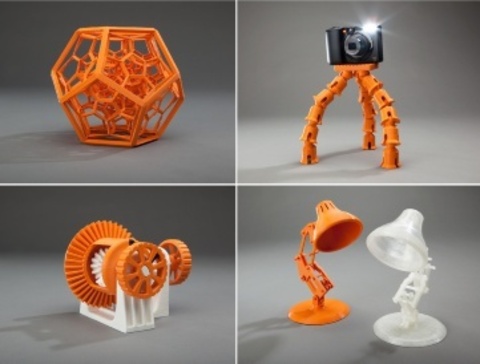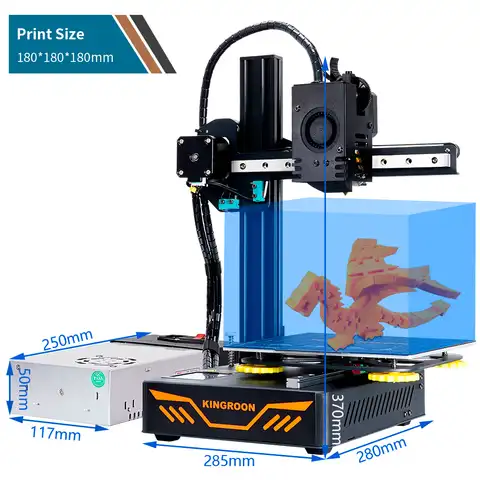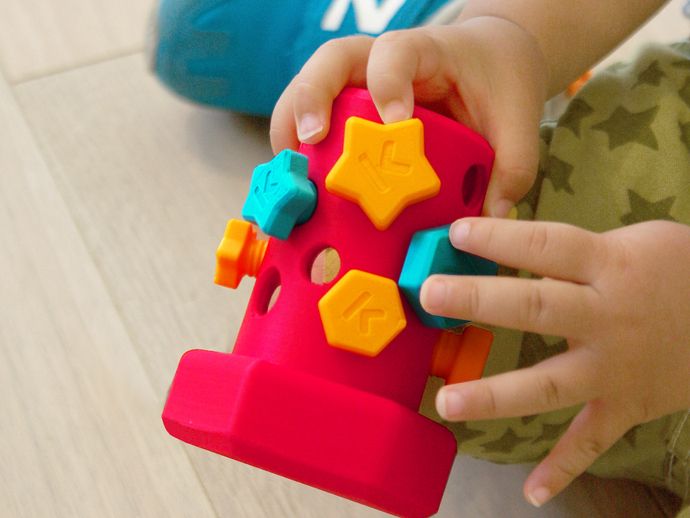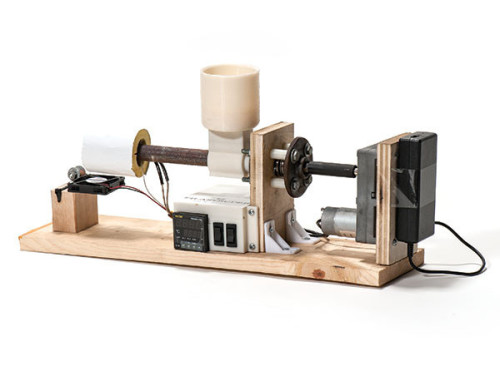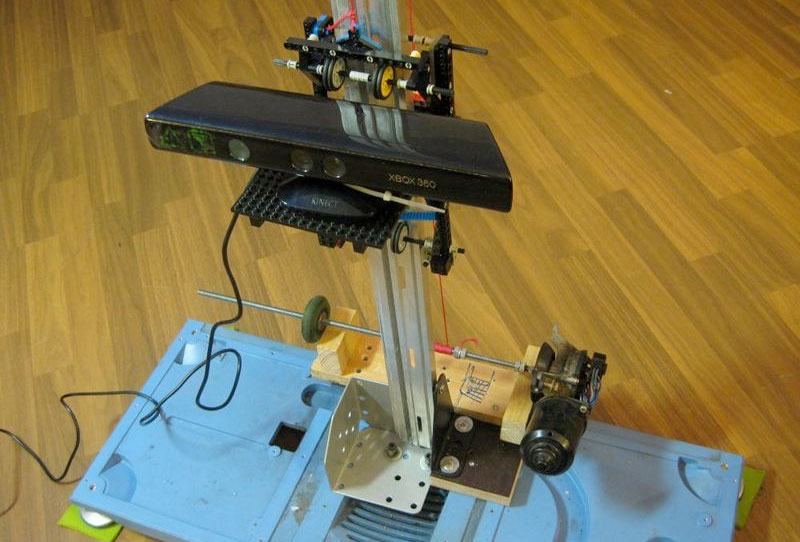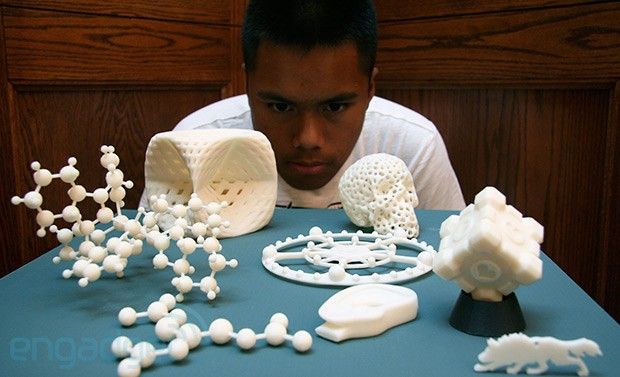Is 3d printing the future of fashion
Is the future of fashion 3D printed? | by Wires Glasses
For its potential to increase efficiency, cut costs and spark bold new innovations, 3D printing has been described as nothing short of a new industrial revolution in design and manufacturing. The fashion industry is no exception to this trend, and in recent years more designers and manufacturers have begun to experiment with the creative possibilities opened up by 3D technology in prototyping, design and production. Over the last decade especially, 3D printing technology has become more accessible, allowing for daring new creative experimentations on and off the runway, and opening the door for exciting new possibilities for individual customisation and sustainability in fashion.
Designer Iris Van Herpen sent the first 3D printed dresses down the catwalk in 2010 with her collection “Crystallization”The first 3D printed fashion piece, “Crystallization”, was sent down the runway in 2010 by Dutch designer Iris Van Herpen. Since the debut of that piece, Van Herpen has continued to pioneer the use of 3D printing in fashion, pushing the boundaries of the design possibilities enabled by additive manufacturing. ‘‘I find the process of 3D printing fascinating’ she says; ‘it’s such a different way of manufacturing, adding layer-by-layer, it can be a great inspiration for new ideas.’ In 2013, burlesque dancer and performer Dita Von Teese modelled the world’s first fully 3D printed dress, a collaboration between architect Francis Bitonti and designer Michael Schmidt. 3D printed entirely in nylon, the gown was assembled from 17 pieces which were then dyed black and adorned with over 13,000 Swarovski crystals to create a continuous flowing form.
Yet while 3D printing garments of this scale is by no means commonplace, designers are increasingly embracing the possibilities of using 3D technology to make aspects of their creations. Since 3D printing makes it possible to create shapes without moulds, it can significantly expand designers’ creative possibilities, such as producing embellishments of extreme intricacy that could not be made otherwise, or highly dense geometric shapes.
More excitingly, perhaps, while in its current form it is almost exclusively the domain of haute couture, as 3D technology becomes more affordable and widely available, it has the potential to be adopted by more manufacturers — even one day becoming available for personal use. When that happens, it could become as revolutionary as the sewing machine, with people able to design and 3D print clothes to their exact measurements at home.
What’s more, it’s considerably more environmentally friendly too. The fashion industry is one of the biggest contributors of environmental pollution, generating enormous amounts of waste and toxic by-products in the treatment and transportation of fabrics. 3D printing however, unlike conventional manufacturing methods, generates hardly any waste, as the process allows for the control of every single drop of material that goes into creating the final product.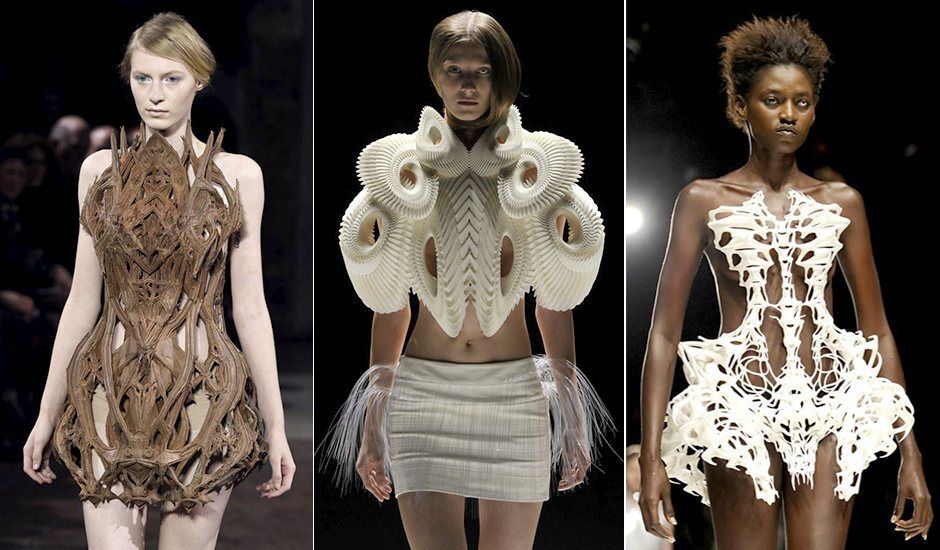 Rather than cutting shapes from larger pieces of material and discarding the rest, 3D printing uses only what is necessary, nothing more.
Rather than cutting shapes from larger pieces of material and discarding the rest, 3D printing uses only what is necessary, nothing more.
Yet despite these exciting horizons, many challenges remain. The most significant of these has to do with the materials and feasibility of wear of 3D printed clothes. Currently, 3D printed clothes simply cannot match up to the softness or breathability of traditional fabrics like cotton, for example. Because the technology involves fusing layers of melted plastic on top of one another, a 3D printed fabric does not behave like a woven textile, and cannot be draped or adapt its shape to fit different bodies. Indeed, the synthetic materials currently available for 3D printing, like polyactic acid, are not comfortable or breathable enough for most clothing items. Instead, industry experts predict a trend of “hybridization” in which 3D technology is incorporated with traditional fabrics and methods to create clothes that are wearable yet still benefit from the imaginative possibilities 3D opens up.
Yet until these breakthroughs are made, the most exciting places we’re seeing 3D printing put to use in commercially available fashion is footwear and accessories, such as eyewear and jewellery. Earlier this year, for example, Nike released the ‘Flyprint’ — the world’s first running shoes with 3D printed uppers, designed for elite marathon runners, while luxury 3D printing studio VOJD in Berlin produces bespoke jewellery for designers such as Alexander McQueen and LOEWE. In eyewear, London-based sustainable sunglasses brand Wires is innovating with 3D technology, producing frames produced from a single piece of wire and modular 3D printed rims. Brands like Wires Glasses exemplify exactly how designers are exploring 3D technology as part of a ‘hybrid’ model, incorporating different materials to create a product that fuses tradition and future, and one which offers something truly unique.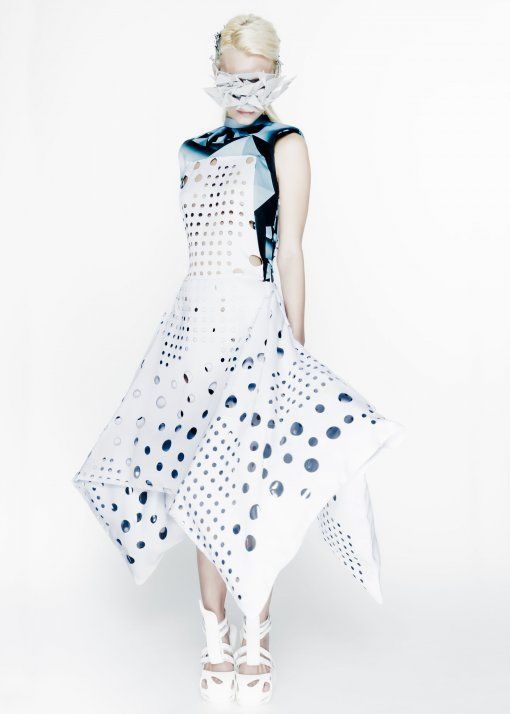
While 3D printed fashion is most definitely in its infancy, early experimentations signal an exciting future ahead for 3D technology in fashion. We may still a long way off from 3D printing clothes at home, or adding our dimensions online for bespoke items to be printed in stores, but infinite possibilities lie in wait as more designers and manufacturers begin to adopt 3D methods.
For Wires founder and designer Yair Neuman, the beauty of 3D technology lies in its scope for improvisation and imagination. Wires Glasses itself was only created after he found himself in need of a pair of sunglasses for a holiday, and instead of buying a new pair he decided simply to create his own using materials he had on hand. Taking a piece of soft wire to create the frames and 3D printing the lens rims in his studio, he transferred a spontaneous design straight from his imagination into the world.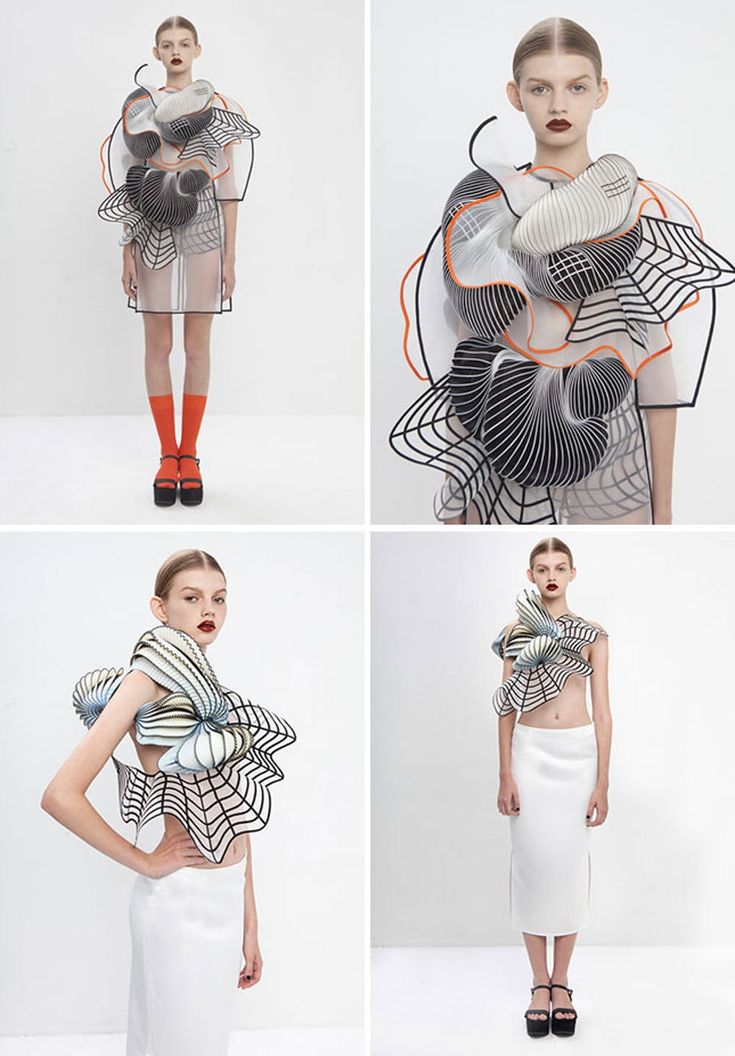 ‘It’s art and science combined’ he says.
‘It’s art and science combined’ he says.
Until we are all able to print our wardrobes however, at least we can benefit from the imagination of 3D design pioneers like Neuman while we wait. For 3D printed fashion, these are exciting times indeed.
Browse Wires Glasses 2018 unisex collection here.
The Future of 3D Printing and Fashion Design Through the Eyes of LabeledBy - 3DPrint.com
LabeledBy is a design studio based in Eindhoven, the Netherlands. They work in fashion and their area of expertise is research and technology development. Their products range goes from technological textiles to innovative couture. As engineers with master degrees from the Technical University of Eindhoven, they are able to explore the future of fashion and adapt innovative methods to fashion design that bring the craft of clothing forward.
Jessica Joosse, co-owner of LabeledBy
In their own words, here is their mission:
We strive for a personalised, localised and sustainable fashion industry.
Therefore it is our mission is to transform the fashion industry through innovation and technology. We develop new textiles that are relevant for a diverse range of applications, and research alternative digital manufacturing systems for textiles and garments. These systems have the ability to automate labor intensive and dangerous processes, improving worker safety and wellbeing. Next to that, these digital manufacturing systems encourage on demand and personalised production of garments, resulting in less waste and more value for the customer.
Detail of a 3D printed pattern on textile
The use of 3D printing in fashion is creating an optimistic path towards the future of textile and clothing. What is presented nowadays as exclusive showpieces could be a possibility at hand for everybody in the future. As one of the most important features of 3D printing, the possibility of have a personalised garment that fits each body perfectly by being unique makes us impatient to see the future of fashion design.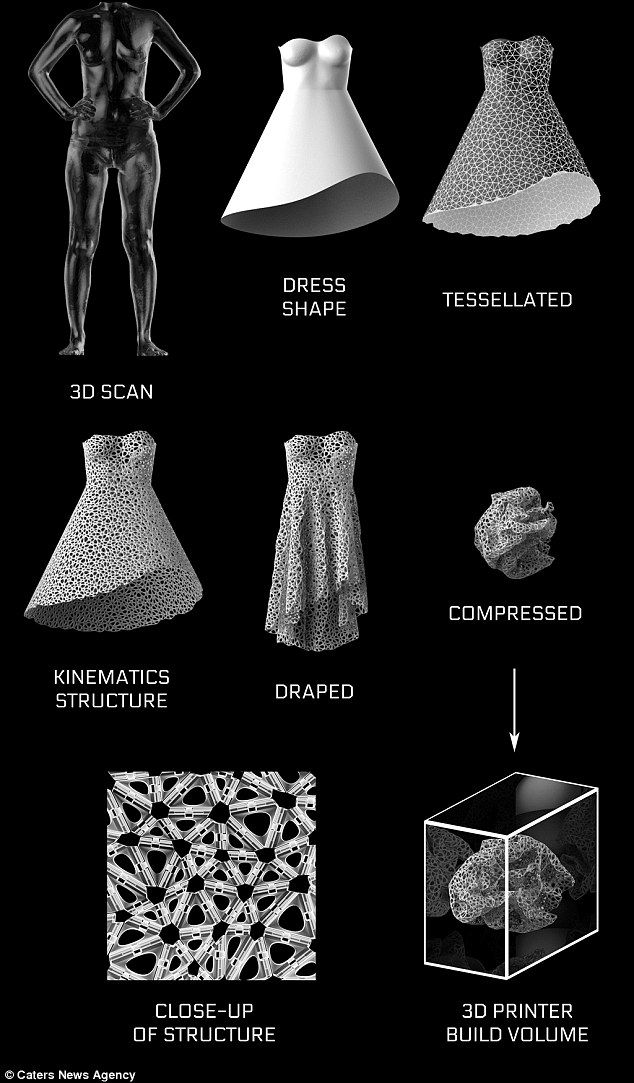
LabeledBy is a studio that has placed its bet in this direction. They offer a future-oriented service of trend research, textile development as well as the making of exclusive showpieces. With an in-house production, they have the possibility of personalise each project and develop it in terms of manufacturing techniques and material. They work with a 3D printer that prints directly on textile, being able to create form small samples to big garments. Starting with an Ultimaker that they then modified the team is now continuing to develop their own print methods.
Garment made by LabeledBy
Detail of textile. Image by Jessica Joosse.
I reached out to LabeledBy to interview Fabienne van der Weiden and Jessica Joosse on their chosen craft.
How does your 3D printer work?
The principle of the 3D printer is comparable with an FDM printer, however, it is redesigned and optimised for 3D printing garments and textiles.
What materials can it print?
The printer prints all the materials (filaments) currently available on the market.
We are constantly tweaking the machine so it can also print with more experimental and biodegradable materials.
How would I work with you if I was a fashion designer?
With our manufacturing technique, the sky’s the limit in terms of design and materials! Fashion designers can make use of our pre-developed textiles or can collaborate with us to develop new textiles which will be implemented in the final design that can be printed on our 3D printer.
Why is what you do important?
FashionTech is there to explore and form the future, in anticipation of current society and its culture. By implementing technology in fashion we can make clothes on the edge of the existing framework and approach the state of the art from unknown perspectives. By doing this, we are able to create a culture in which society is encouraged to discuss the future of the fashion industry.
What is the added value of what you do?
We believe that fashion is not only perceived as functional, it also has the ability to show someone’s identity.
Therefore garments could become much more personal, both in fit as in expression. Using technology during the process of creating a garment gives us the possibility of making the garment more personal and unique.
What are you adding to the 3D printing & fashion world?
The combination of digital generated personalized patterns (through for example AI) and digital manufacturing techniques gives us the possibility of easily changing the design of each garment without additional costs or long setup time. This gives fashion designers and fashion brands the possibility to efficiently adapt and personalize their garments to the fast-changing needs of their customers. We actually believe that this can give the fashion industry a lot of freedom and benefits when applied correctly!
What do you think about the future of 3Dprinting & fashion?
We believe strongly that consumers’ search for unique and sustainable consumption experiences will gradually drive the emergence of a different paradigm.
Such a paradigm will require new technologies for consumer-driven design, new production methods for flexible, efficient and local on-demand production down to lot size one. And of course a seamless network of designers with different fields of expertise, working with these new technologies in an open-source community. We are excited for the future of fashion!
Can you actually wear the garments? Can you clean them in a washing machine?
Absolutely! Check our Instagram. Currently, our garments are worn by performers and artists. Yes, that’s not a problem! We use materials that are suitable to wash in a regular washing machine.
Personally, I do believe that 3D printing has a lot to offer the fashion world. Given my experience with developing 3D printing filaments as an engineer, I’m skeptical about the real-life wear and washability of 3D printed garments today. But, I’m sure that motivated people like Fabienne & Jessica will get us there in the end. We are at the beginning of a long path whose end requires a creative mind to foresee. The difficulties are in imagining a future of 3D printing in fashion which itself creates new aesthetics that still feel futuristic to us. As a designer, this idea of new aesthetic tinkles my mind. I’m excited to see the work of studios like LabeledBy which help us to envision the future of 3D printing and fashion through their dedication.
We are at the beginning of a long path whose end requires a creative mind to foresee. The difficulties are in imagining a future of 3D printing in fashion which itself creates new aesthetics that still feel futuristic to us. As a designer, this idea of new aesthetic tinkles my mind. I’m excited to see the work of studios like LabeledBy which help us to envision the future of 3D printing and fashion through their dedication.
Stay up-to-date on all the latest news from the 3D printing industry and receive information and offers from third party vendors.
Tagged with: 3d design • 3d print fashion • design • Eindhoven • fashion • fashion design • innovation • ultimaker
Please enable JavaScript to view the comments powered by Disqus.
3D Printing in the Fashion Industry: A New Dimension
We are witnessing what many call the third industrial revolution: 3D printing, or additive manufacturing, has the potential to move us away from the era of mass production and into a new reality of customized custom manufacturing.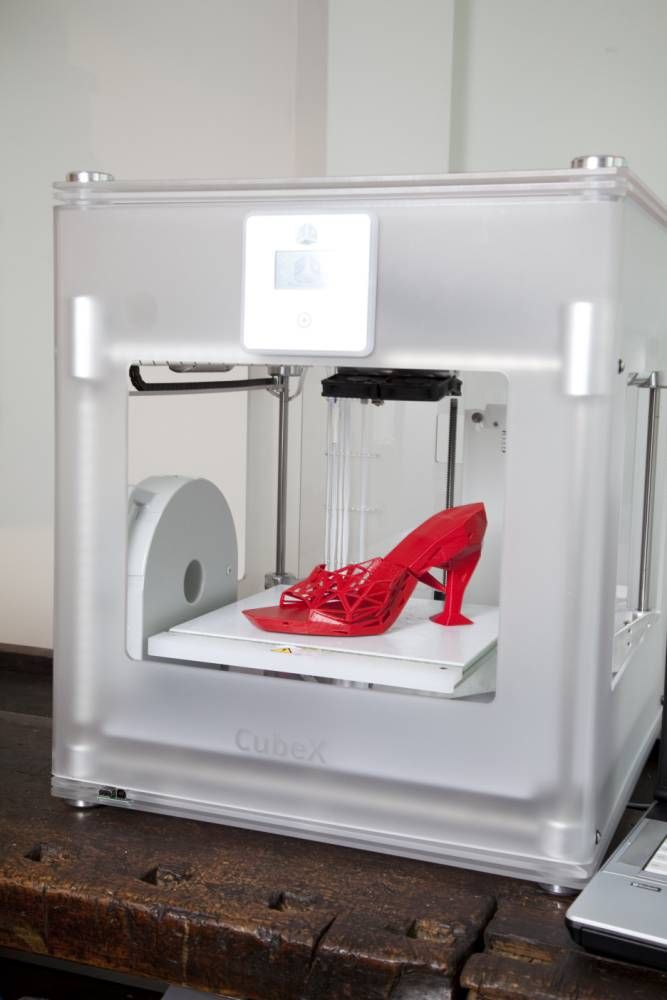 A good example is fashion. In the recent past, "fashion houses" were more like multidisciplinary research institutes. To create a collection of clothes, in addition to an expert sense of style, you need knowledge in anatomy, advanced sewing machines, appropriate fabrics and accessories, accessories, shoes, people (cutters, seamstresses, models and many others). Through trial and error, an art object is created, rarely successful, but always laborious. 3D printing is a toolless manufacturing method that allows physical objects to be produced from a 3D model, usually in layers. The term is also used generically as a synonym for rapid prototyping. The scope of the technology is endless: from tools and toys to robots and mechanical parts. There is no limit to what a 3D printer can create.
A good example is fashion. In the recent past, "fashion houses" were more like multidisciplinary research institutes. To create a collection of clothes, in addition to an expert sense of style, you need knowledge in anatomy, advanced sewing machines, appropriate fabrics and accessories, accessories, shoes, people (cutters, seamstresses, models and many others). Through trial and error, an art object is created, rarely successful, but always laborious. 3D printing is a toolless manufacturing method that allows physical objects to be produced from a 3D model, usually in layers. The term is also used generically as a synonym for rapid prototyping. The scope of the technology is endless: from tools and toys to robots and mechanical parts. There is no limit to what a 3D printer can create.
Alexander Kornveits, expert in the field of additive technologies, founder and CEO of Tsvetnoy Mir
Fashionable futuristic design requires innovative production technologies, here 3D printing comes to the rescue. A wide variety of fashion accessories including bracelets, rings, brooches, necklaces and pendants can now be easily 3D printed. Let's take a closer look at how this technology can be used in the fashion world...
A wide variety of fashion accessories including bracelets, rings, brooches, necklaces and pendants can now be easily 3D printed. Let's take a closer look at how this technology can be used in the fashion world...
Custom Design
One of the unique aspects of 3D printing is the ability for designers to create custom shapes and sizes that would be impossible to produce with traditional methods.
Photopolymer 3D printing allows designers to produce products in small batches. Fashion designers can now create bold, one-of-a-kind pieces. In addition to time, technology can significantly reduce costs.
Accessories
The range of fashion accessories depends more on the imagination of the creator than on the possibilities of your wallet. All this can be easily printed using a conventional photopolymer 3D printer. Need a flower ring? No problem! 3D printing can do this and more. What else can be produced in this way?
Brooches
Brooches are intricate pieces of jewelry that highlight your personality. Business women especially like to use them to decorate and complement their business suits. For example, Madeleine Albright, the first female US Secretary of State, over the years of her career has created a new diplomatic language, full of metaphors and secret meanings. Through jewelry, she expressed her mood, intentions or the situation at the negotiations, and political scientists and journalists vied with each other to interpret the images on the left lapel of her jacket. 3D printing can be used to produce a custom brooch that can complement the look, and perhaps say something to the “initiates”.
Business women especially like to use them to decorate and complement their business suits. For example, Madeleine Albright, the first female US Secretary of State, over the years of her career has created a new diplomatic language, full of metaphors and secret meanings. Through jewelry, she expressed her mood, intentions or the situation at the negotiations, and political scientists and journalists vied with each other to interpret the images on the left lapel of her jacket. 3D printing can be used to produce a custom brooch that can complement the look, and perhaps say something to the “initiates”.
Rings
3D printing can be used to make a prototype ring before making it into the final version of precious metals and stones. This will allow the designer to easily and quickly make adjustments, ensuring the ring fits perfectly and matches the client's expectations and end result. Important factors are saving time, money and, of course, a significant reduction in the likelihood of errors in the final product.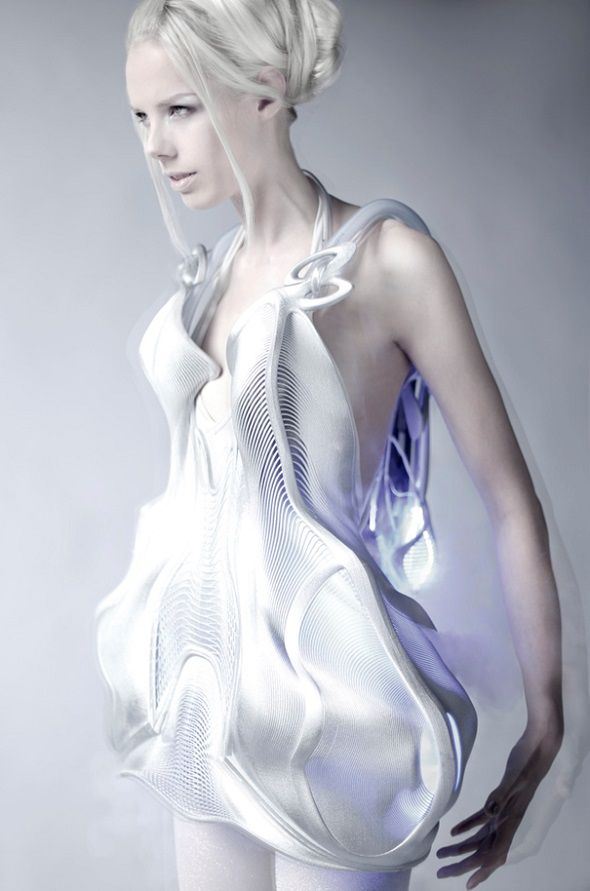
If earlier only professional 3D printers costing from $50,000 were suitable for the jewelry industry, now with the introduction of inexpensive mono LCD displays with 4K resolution, such printing is available to any jewelers and designers. The purchase budget fell below $500.
Bracelets
Similarly, intricately designed bracelets can be created using photopolymer or wax 3D printers. It can be an exclusive version, one of a kind, which, if necessary, can be mass-produced. Technology allows you to think more broadly and not be afraid to experiment with expensive precious metals and stones. After all, modern consumables allow you to create prototypes with a high level of reliability.
Clothing and footwear
Shoes, dresses and other fashion items can also be 3D printed. This allows you to create ready-made items for wear, as well as improve the design of the model before launching into mass production. Shoes with geometrically complex 3D designs often find their way into the fashion mainstream.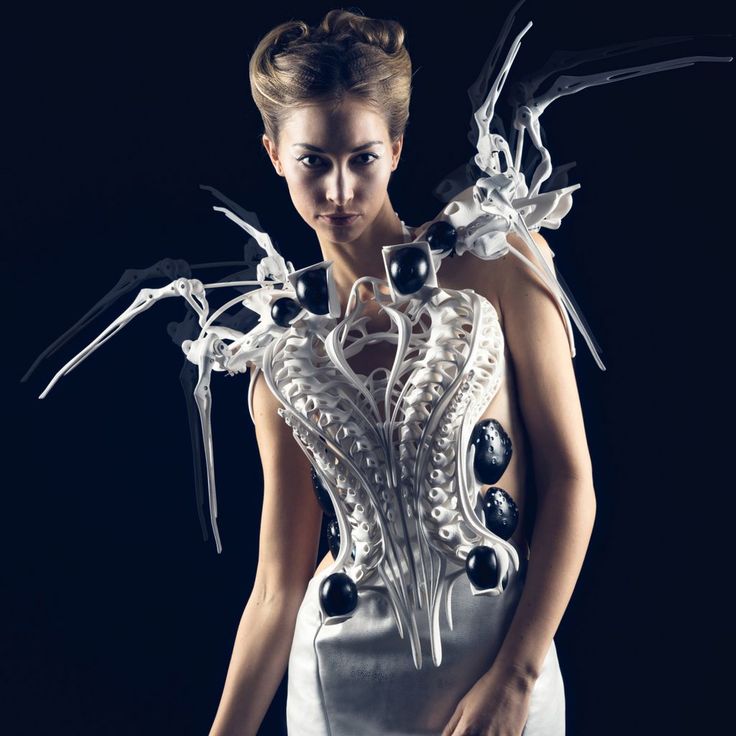
And for more mundane purposes, there are sneaker soles. For example, Adidas makes them from a mixture of polymer resin with polyurethane added and prints in a lattice structure that promotes proper load distribution.
Adidas claims the Futurecraft 4D shoes are incredibly comfortable, with unparalleled ergonomics and wear resistance.
Simultaneously with shoes, there are numerous experiments on the use of 3D printing to create designer outfits and especially dresses.
One of the first 3D printed dresses was presented by American model and singer Dita Von Teese in March 2013 in New York. Couturiers Michael Schmidt and Francis Bitonti teamed up with 3D printing service Shapeways to print it using additive manufacturing technology. It consisted of 17 nylon parts, which were painted black and encrusted with 13,000 Swarovski stones.
In 2019, a whole series of such models was presented at the famous MetGala charity ball in New York. In the photo - American celebrities in outfits with 3D printed elements.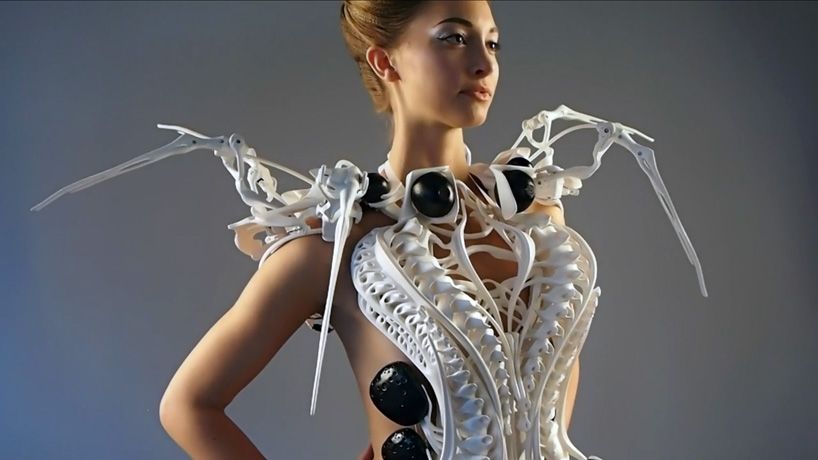 Everyone was especially struck by the dress in the form of a rose petal (in the center), in which the British model Jordan Dunn appeared at the ceremony.
Everyone was especially struck by the dress in the form of a rose petal (in the center), in which the British model Jordan Dunn appeared at the ceremony.
It, like the entire collection, was created by fashion designer Zac Posen in collaboration with GE engineers and 3D printers and made a splash on the red carpet of the event.
It is too early to talk about the widespread introduction of 3D printing in the fashion industry, but it is already clear that this process will continue. Creating custom-made jewelry is not a trend of the future, but of the present, a prerequisite for meeting the needs of the customer.
Source
3D printing in the fashion industry, 3D printer, Alexander Kornveits, Tsvetnoy Mir company, making a prototype of jewelry, 3d printed shoes, using 3D printing to create designer outfits and especially dresses
clothes that can be printed on a 3D printer - Future on vc.ru
457 views
Imagine a situation - you are preparing for the most important event in your life.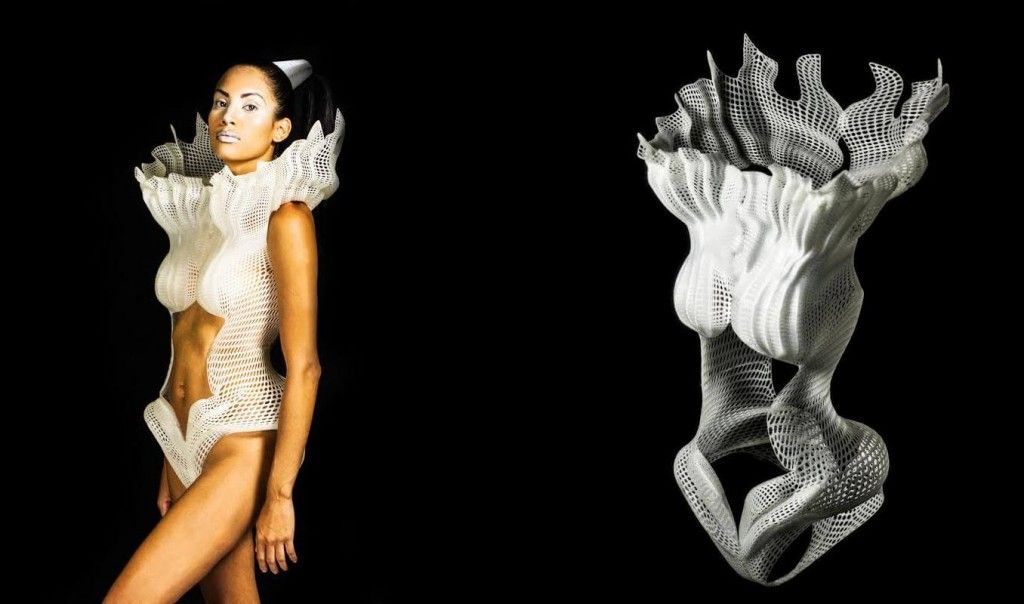 For example, speaking at a conference somewhere in Dubai. To make this moment memorable for a long time, a long preparation includes the selection of a wardrobe, and beautiful pictures have not harmed anyone yet. But there is a small problem: upon arrival, you discover that the airline accidentally sent your luggage with all your clothes to Kemerovo. Shit happens.
For example, speaking at a conference somewhere in Dubai. To make this moment memorable for a long time, a long preparation includes the selection of a wardrobe, and beautiful pictures have not harmed anyone yet. But there is a small problem: upon arrival, you discover that the airline accidentally sent your luggage with all your clothes to Kemerovo. Shit happens.
In 2021, this event will rattle your nerve cells. In the world of clothing of the future, as Danit Peleg sees it, this misunderstanding will not cause even a dissatisfied sigh. Any item of your wardrobe, any accessory, everything that you can put on yourself is made virtually with one single limitation - the designer's imagination.
In the application, you save your body parameters, the designer develops a wardrobe specifically for your unique style and gives the result of his work in the form of an NFT token. You don't even have to date. What does it give? For example, a backup of the entire wardrobe, the ability to change colors or the option to “print” your clothes anywhere in the world.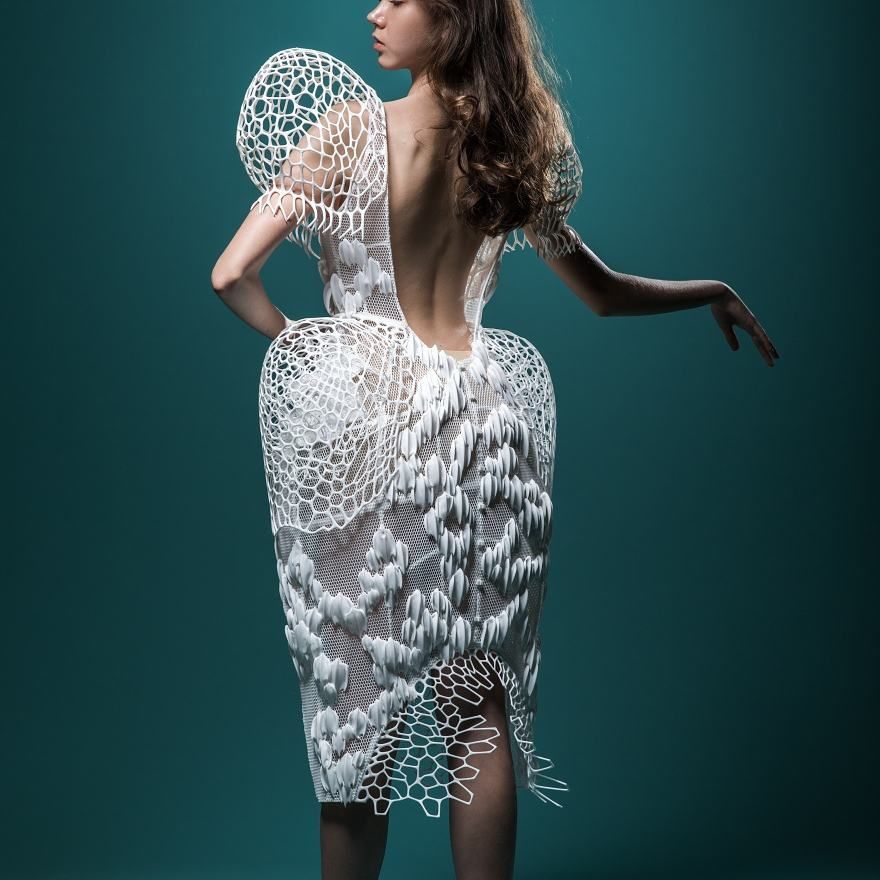 In addition, the materials used by Danit Peleg are 100% recyclable.
In addition, the materials used by Danit Peleg are 100% recyclable.
History of creation
A series of experiments with knitting machines, laser cutting and digital printing led Danit to Avante Garde, where she was introduced to 3D printing. The first models of clothes turned out to be tough and fragile, but the environmental friendliness of the process only added to Danit's enthusiasm, because the fashion industry is the second most "dirty" industry on the planet. Some statistics from the Internet:
- 20,000 liters of water are used to produce 1 kilogram of cotton, which, together with other factors, gives us a figure of 1.5 trillion liters of water per year.
- 200 tons of water is required to dye 1 ton of fabric.
- Up to 1,900 microplastics end up in the ocean after synthetic fabrics are washed, and this number doubles for used clothing.
- Only 1% of all production waste is recycled.

When I learned about the current environmental situation in the global fashion industry, I was very, very depressed. I did a little research and found out that fashion design has become the second dirtiest industry. I didn't want to be a part of it. Now you can try on the thing you like using augmented reality, and we use the same technology as 100 years ago.
Danit Peleg, Fashion Designer
Danith launched her first print collection called Liberty Leading the People right from home. The collection of five outfits, including shoes and accessories, was completely 3D printed. Six printers worked 24 hours a day, and Danit herself woke up in the middle of the night to change the color of the ink, collect clothes and try them on her models.
After her initial success, Danit devoted herself entirely to improving materials for 3D printing. The focus is on combining flexible structures with flexible materials to create softer tissues.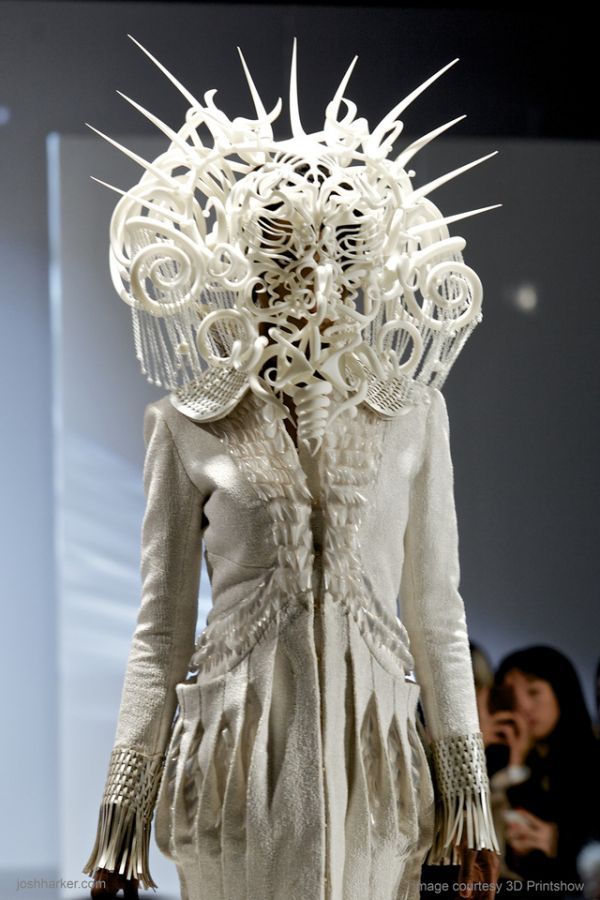
Most of the materials she now uses look and feel like rubber: they are soft, but not at all like cotton, silk, or leather. In collaboration with Moon Creative Lab, she develops environmentally friendly materials for 3D printers that behave like fabric and are 100% recyclable and recyclable.
And if there is no 3D printer nearby, the company will print the clothes piece by piece and send them to the customer.
"I think all of our clothes can be recycled," Danit muses. “You just go to the store, give away your old t-shirt and get a discount on your next purchase based on weight, or get some of your money back. Or you can just reuse your own material,” she emphasized. “You can do whatever you want with him. You will have a spool of material like wool, cotton or silk, and you can reuse your materials over and over again.”
NFT
The hype around NFT has not bypassed the fashion industry either. The latest Danit Peleg collection comes in the form of an NFT token that contains a folder of files for 3D printing, a virtual avatar outfit, and a document explaining how to print and assemble new clothes.


